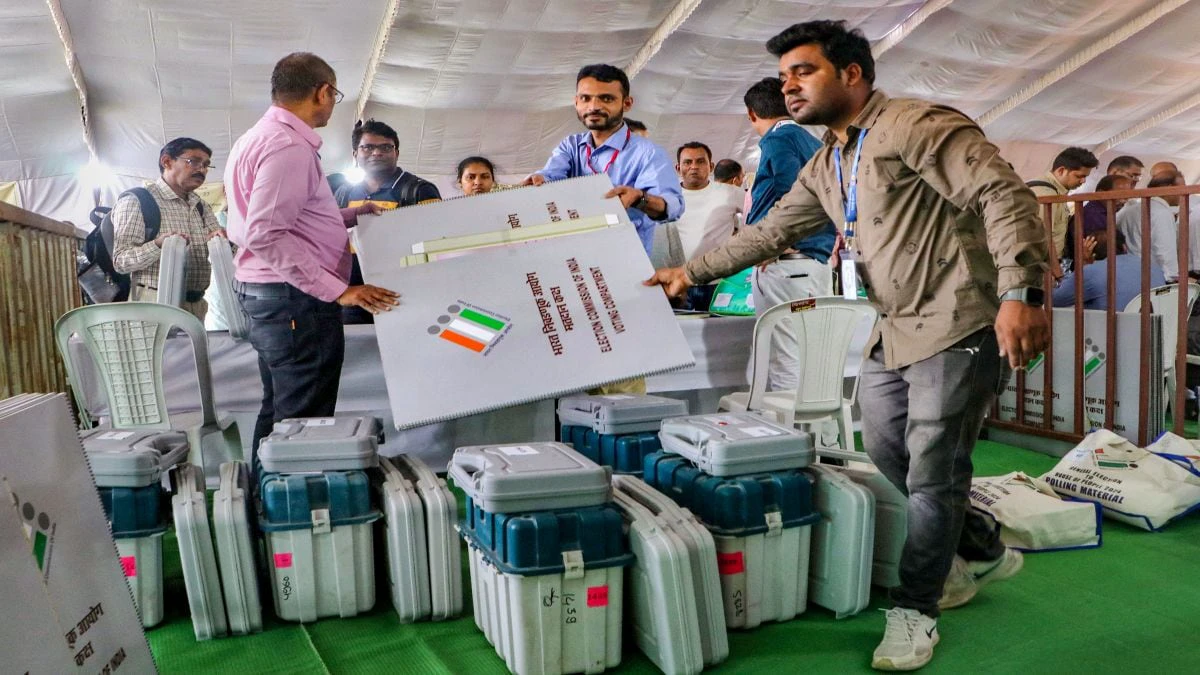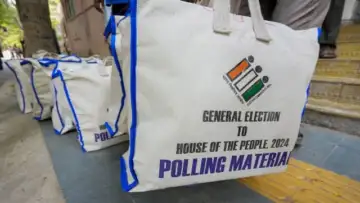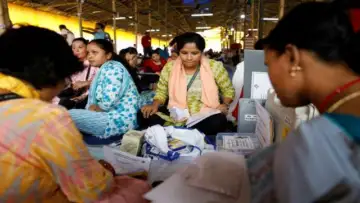
Conducting India’s election is no easy task. The Election Commission (EC) has to ensure that voters across the length and breadth of our vast nation is given an opportunity to vote. It also has to cater to a large crowd – this time, there are around 96.8 crore people eligible to vote this election.
As the EC says, “India gets ready for the celebration of democracy… A mammoth exercise in democracy which is world’s largest electoral movement of man and material.”
But conducting an election on such a large scale also means a big, big cost. We explore just how much does it cost to conduct a Lok Sabha election, and who burdens this expense.
Rs 10.5 crore and rising
When India conducted its first election in 1951-52, it took the Election Commission 68 phases to complete the electoral exercise. At the time, it cost the country Rs 10.5 crore to organise the Lok Sabha election.
Since then, there’s been no looking back. With each election and the rise in the number of eligible voters, the cost of the poll has also increased significantly. In fact, it is only the 1957 election that saw a drop in the costs.
In 2014, the year Narendra Modi was elected, the cost of the Lok Sabha election was Rs 3,870 crore. And, if a report published by New Delhi-based Centre for Media Studies is to be believed, then the cost of the polls in 2019 was a whopping Rs 50,000 crore ($7 billion). Compare this to the approximately $6.5 billion that was spent during the 2016 US presidential election, as per OpenSecrets.org, which tracks money in American politics.
If one analyses the data even further, it is revealed that the EC spent 6 paise per elector in 1951 and that increased to Rs 46 in 2014.
N Bhaskara Rao, chairman of the Centre for Media Studies, was quoted as telling Bloomberg that most of the money spent was on social media.
Simon Chauchard, a Columbia University lecturer who has followed elections in India, concurs with this analysis, stating: “Indian politicians feel you’ve got to do new things, and crazier things, and bigger things and louder things. It’s a bunch of panicky candidates throwing money around to voters but also to vendors selling all kinds of stuff useful in a political campaign.”
And if we go by the previous years, then 2024’s election cost would approximately cost the double of the last election, which means a whopping Rs 10,00,00 crore.
Breaking down the biggest costs
But what exactly does the EC spend on during polls? There is a myriad of expenses they make – from deploying officials and armed personnel, to setting up polling booths, procuring electronic voting machines (EVMs) and other paraphernalia, including the edible ink, and running awareness programmes.
Of these, procurement of EVMs is a significant part of expenses. As per an Indian Express report, since the 2019 Lok Sabha polls were completed, the expenditure on procuring and maintaining EVMs has risen. In the first Budget after the election, the Centre allocated Rs 25 crore for EVMs. In the latest Budget, Rs 1,891.8 crore was initially allocated for EVMs, with Sitharaman tabling an additional Rs 611.27 crore demand for grants in the Winter Session of the House.

Electronic Voting Machines (EVM) and other election material being distributed from Nandanam Arts college to the respective polling booths on the eve of the first phase of Lok Sabha elections, in Chennai. PTI
Another big expenditure is the administrative costs. The EC has to pay its officials and volunteers for the poll-related work. The officials are paid for attending training sessions and travelling. It also conducts campaigns and videographs polling and campaigns of political parties. These measures have increased the expenses manifold.
In fact, as per an order released by the EC, dated as recently as 22 March, a presiding officer is paid Rs 350 per day, whereas polling officers are paid Rs 250 per day.
The EC’s budget, as per government data, has increased from Rs 236.6 crore in 2018-2019 to Rs 340 crore in the 2023-2024. This coincides with the rise in EC staff – from 591 personnel in 2022 to 855 in 2024.
Experts note that the rising cost of elections is not surprising considering the scale of the Lok Sabha elections. In the first general election, there were 1,874 candidates from 53 parties contesting in 401 constituencies (including dual member seats) requiring 1.96 lakh polling booths.
In 2019, these figures rose manifold – with 8,054 candidates from 673 parties in 543 constituencies with 10.37 lakh polling booths.

Security personnel and polling officials with EVMs and other election material leave for election duty ahead of the first phase of voting for Lok Sabha elections, in Doda. PTI
Burdening the cost
And who shoulders this total expense? As per the guidelines issued by the Ministry of Law and Order in October 1979, the Centre bears the cost of the Lok Sabha election fully.
Similarly, the cost of state Assembly elections that are held are completely borne by the state government. However, if the elections to state and Lok Sabha are being conducted simultaneously, the cost is borne by both the state and the Centre equally.
This time along with the Lok Sabha polls, the states of Andhra Pradesh, Sikkim, Arunachal Pradesh and Odisha will also go to the polls on 13 May.

Polling officials sort papers after collecting election materials at a distribution centre, ahead of the first phase of India’s general election, in Alipurduar district in West Bengal. Reuters
A long, drawn out election
This election is bound to be expensive considering the duration of the polling period. The 2024 Lok Sabha elections will be held across seven phases – spanning across a long and tiring 44 days. The first phase will be today (19 April), followed by the second on 26 April, and then the next phases are on 7 May, 13 May, 20 May, 25 May and 1 June, respectively. Results for the polls will be announced on 4 June.
The total days of the electoral process this time, from the announcement of the polls by the Election Commission on Saturday till counting of votes, is 82.
The 2024 poll season, stretching over 44 days, is the longest ever since the first Lok Sabha election in 1951-52. Those polls were held from 25 October 1951 to 21 February, 1952 and had a whopping 68 phases in which an astronomical 10,59,50,083 exercised their newly acquired voting right.

